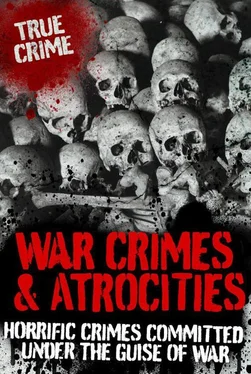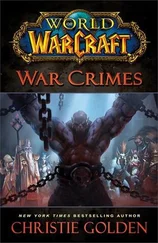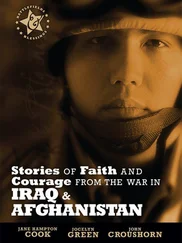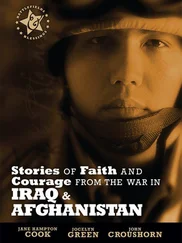In the centuries before Ivan III subjugated Novgorod territory in 1478, the city of Novgorod had grown from a trading post, dealing in furs, and an Orthodox Christian city into the overlord of a great state stretching across northern Russia as far as the Urals and as far north as the White Sea and the Arctic Circle. In the 15th and early 16th centuries, the Peterhof in Novgorod was one of the four great, and most distant, trading posts, or kontore, of the Hanseatic League. Thus, Novgorod had stronger connections with Europe and the West than most parts of Russia. Although Ivan III deprived Novgorod of its independence, of its wealth and of its links with Europe, the city was still the third largest in Russia, after Moscow and Kiev, in the time of Ivan the Terrible.
Ivan’s increasingly paranoic attention was drawn to the city in the far north-west of his territory in the late 1460s, after General Kurbsky, the hero of Russia’s war against Kazan and a leading counsellor of the tsar, fled the country. Kurbsky was escaping from the escalating horrors of Ivan’s bloodthirsty ten-year reign of terror against the boyars, which saw many boyars and their families either murdered or ordered by the Oprichnina to be deported to Siberia. But when General Kurbsky became a commander in the Polish army, Ivan began to see Polish conspiracies everywhere, not least in Novgorod, with its long history of dealings with Europe.
Believing that Novgorod was a hotbed of conspiracy and intended defection to Poland, Ivan the Terrible sentenced the whole population of the city to death. With a large force of oprichniki , Ivan marched north to Novgorod, arriving outside the city on 2 January, 1570. The oprichniki immediately began throwing a cordon round the city, building a great wall to prevent its citizens escaping.
When the wall was complete, Ivan and his entourage, which included his son, Tsarevitch Ivan, attended a great banquet in the house of the Archbishop of Novgorod. The next day, 9 January, the massacre began. Every day for five weeks, up to 1,000 men and women of Novgorod were gathered up by Ivan’s men and paraded before him and the tsarevitch in the city’s main square. With their own children looking on, the men and women were tortured and then killed, many by being pushed under the ice of the frozen river Neva and drowned. Every day, after Ivan and his son had witnessed this dreadful spectacle, Ivan, clad in a monk’s robe, went into church and prayed to god – not for forgiveness, but to give thanks.
About 60,000 people were killed during the Novgorod massacre. Many thousands more were deported. When the killings ceased, the oprichniki sacked the city and then laid waste to the surrounding countryside. Novgorod never regained its former greatness.
Ivan the Terrible followed the destruction of Novgorod with more bloodletting during a ‘Great Festival of Blood’ in Moscow, in which the main event was more murdering of ‘traitors’. However, the reign of the Oprichnina was soon to be over. Its fighting men failed so utterly to protect Moscow from an invading force of Tartars from Crimea in 1571 that the city, like Novgorod, was reduced to ashes, with only the Kremlin still standing. The following year, Ivan disbanded the Oprichnina and the reign of terror it had overseen came to an end.
Not that Ivan the Terrible’s own actions became any less terrible or his rages less murderous. He killed his son Ivan, whom he loved and admired – and with whom he shared a delight in torturing animals – in the course of an argument with him. This was one killing that even Ivan the Terrible could not forget, and when he died three years later, in 1584, it was said that sorrow for his dead son had caused his own death.
PART THREE: WAR CRIMES AND ATROCITIES 1600–1930
1756

The Black Hole of Calcutta is memorable for being a singular atrocity, and little in either history or fiction can compare to the horrors that the survivors of that night described. The incident got its name from a small, airless dungeon at Fort William in Calcutta, which was led by the British East India Company.
ENGLISH PRESENCE IN INDIA
The British established their first trading post in India in 1614, and since then their presence has grown steadily. The East India Company was established by the British to consolidate their trading posts in India. It was an early example of privatization and was possibly the single, most powerful economic force of its time. It had been founded by the Royal Charter of Queen Elizabeth I, and it was given a group of knights and merchants from London to try to take over some of the East Indies spice trade from the Dutch. Although the company failed in this mission, it was successful in setting up trading posts in both Madras and Calcutta. Troops were hired by the company to protect their employees from the agitated natives and from other European powers. It wasn’t long before the East India Company was extremely rich and powerful, with branches all around the world and with its own private army.
INDIAN HATRED
The Nawab of Bengal, Siraj-Ud-Daulah, was not happy with the British interference, seeing them as a direct threat to his own rule. The 27-year-old ruler had a reputation for his harsh tactics and had been been described by Robert Clive, the young English warrior, as ‘a monster of vice, cruelty and depravity’.
When Dauley heard about the new fortifications being erected at Fort William, he demanded that they be demolished. His demands were ignored and the young Indian grew more and more angry at the British intervention and organized an army to lay siege to the fort. The fort’s commander got wind of the siege and decided to leave with the majority of his army. In their place, he left just a token force under the command of John Zephaniah Holwell, who was a civil servant with the East India Company. With further desertions, and so few people to hold Fort William, Dauley and his army quickly overcame the stronghold and indeed Calcutta itself, which was the centre of power for the East India Company.
At Fort William, Dauley’s warriors quickly gathered together the remaining group of 146 Europeans who had not managed to escape. He ordered his soldiers to march them into a cell, which was nicknamed the ‘Black Hole’. The cell itself was only 7.3 m (24 ft) wide by 5.4 m (18 ft long) and in the blazing heat of the Indian summer this was indeed a hellhole for one person, let alone 146. The prisoners were packed into the dungeon with no food or water, and little air came through the two small, barred windows. The room was packed so tightly, that the guards had a difficult job to shut he door, and fires in the courtyard outside made the air even more oppressive. It was Monday 21 June, 1756, and it was going to be a long and horrifying night for the captives.
The prisoners tried to bribe one of the guards stationed on the verandah outside the cell, offering him 1,000 rupees if he would move them to a larger room. He went away to ask permission, but came back and said it was impossible because the nawab was asleep and he was not allowed to wake him. The captives doubled their bribe, and the guard made another attempt at getting them moved, but again no one dared to wake the nawab.
By 9.00 p.m. several of the prisoners had died due to heat exhaustion, and many more were becoming delirious. Those strong enough to speak, pleaded desperately for water and a few water-skins were brought to the gratings. However, in their mad struggle to reach the water, many of the inmates were trampled to death, while the heartless guards simply held torches up to the gratings and mocked them for their frantic struggles. As the hours went by the screams and struggles died down, and all that could be heard were faint moans from those who were still conscious.
Читать дальше













